Serious Compacts Flickr group member Luc de Schepper (Skippy1958) has added an entry to our reader generated Hall of Fame, the Canon G2. Check out his post here. Thanks Luc!
Click here to learn how to add one of your own favorites to our Hall of Fame.
New Hall of Fame Inductee - Canon G2
Thursday, May 29, 2008
Posted by Amin
![]() Labels:
Hall of Fame
Labels:
Hall of Fame
Gap in Sensor Sizes
Wednesday, May 28, 2008
The diagram below illustrates the relative sizes of the two sensor groups. The cropped DSLR sensor group is shown in orange tones, the compact sensor group in blue tones.
As evident in the diagram, there is a big gap in sizes between the largest compact sensor, the now rarely used 2/3” (8.8 x 6.6mm) sensor, and the smallest DSLR sensor, the 4/3 (18.0 x 13.5mm) sensor. This gap is much larger than the size difference between individual sensors in each of the two groups.

Sigma’s DP1 has used a sensor in the first group of large DSLR sensors. The price of having a very large sensor in a compact body is a not very bright, nor versatile, fixed 28mm lens. All other serious compacts to date (late May 2008) use the much smaller sensors typical in compact cameras. Except for Ricoh’s GRD I/II, all these cameras feature versatile zoom lenses that are at least fairly bright at the beginning of their respective zoom ranges. Because their sensors are small, noise and noise reduction remain an issue in all but the best lighting conditions.
The question is why there isn’t an intermediate size of sensor for serious compacts: a size that fits between the DSLR and compact sensor sizes. These sensors could offer better image quality than those sensors in the compact group while they wouldn’t be so large as to preclude zoom lenses. An intermediate size would be 12.0mm x 9.0mm, which I’ll call the “S/C” sensor. This hypothetical sensor has approximately half the area of the 4/3 sensor and about twice the area of the 2/3” sensor. This sensor should allow for reasonably compact lenses and camera bodies.
Making a sensor for just one class of camera or model seems feasible if we take Panasonic’s LX2/D-LUX 3 as an example. Its unique 16:9, 8.8mm x 4.8mm, was only ever used in that particular camera model. As of May 2008, Fuji’s 2/3” Super CCD HR sensor is also only used in one model: the FinePix S100fs.
So perhaps a new intermediate sensor size could provide a better balance between image quality and a compact form factor. Read More......
Posted by Unknown
![]() Labels:
D-LUX 3,
DP1,
LX2,
sensor
Labels:
D-LUX 3,
DP1,
LX2,
sensor
DP1 Shootout Pt. 7 - Detail Comparison with G9 and D-LUX3
Monday, May 26, 2008
In Part 3 and Part 3s of the shootout, I compared ability of the DP1 to capture detail to that of the Canon 5D with 28mm f/2.8 lens and Olympus E-420 with 14-42mm lens. Based on those comparisons, it seemed that the DP1 is capturing a good bit less detail than the 12MP 5D combination. However, would a 12MP small sensor compact camera also capture more detail than the DP1? That is the question I set out to answer here in Part 7. As in Part 6, the DP1 will be compared to the 12MP Canon Powershot G9 and the 10MP Leica D-LUX 3 (Leica's version of the Panasonic LX2).
I tested each camera in turn to see what f-stop would be optimal for sharpness across the frame. For both the Canon and Leica, the best results were obtained at f/4. Stopping down to f/4.5 of f/5 (f/4.9 with the Leica) resulted in very slightly better performance in the extreme corners with a slight drop in performance in the center of the frame. Stopping down beyond f/4 did not appreciably help further eliminate C.A. in the Canon or Leica images. The Sigma was a consistent performer across a variety of apertures, and I finally settled on f/5.6. The Canon was at ISO 80, the Leica and Sigma at ISO 100. Each camera was allowed to determine shutter speed and white balance automatically.
The tripod location was fixed for the Leica and Sigma images and then moved for the Canon image in order for that capture to have a similar field of view to the others, given a change from 28mm equivalent (Leica and Sigma) to 35mm equivalent (Canon) angle of view.
The Canon and Leica files were processed in Adobe Lightroom, latest version, with default settings. The Sigma file was processed in Sigma Photo Pro with +0.5 Exposure to give a similar apparent exposure to the other files. The only other change from default settings was a -0.4 Sharpness adjustment in order to decrease the apparent sharpening artifacts. I experimented with sharpening settings from -1.0 to 0 and determined that -0.4 did not adversely affect overall detail captured in any way. The DP1 file was processed at native size (4.6MP).
Leica and Sigma files were upsized to 109.35% and 160.71%, respectively, using Genuine Fractals 5. This resulted in an output size of 12MP, matching the native output of the Canon G9. Genuine Fractals maintains detail well during upscaling, sacrificing perhaps a touch of detail when compared against Photoshop Bicubic. I tried both methods for this comparison, and the only significant difference was that the Bicubic method resulted in more jaggies along diagonals in the DP1 image. The All three files were given the same final sharpening step in Photoshop CS3 (Smart Sharpen, amount 50, radius 0.3). This resulted in a similar degree of sharpening (all being a bit oversharpened) amongst the three images, as determined by comparing halos throughout each image.
The DP1 and D-LUX3 samples shown below represent 100% crops of images that have been upsized to match the native G9 output size (12MP).
The specific area of examination is depicted by the yellow box in the resized photo preceding each set of crops.

Some C.A. is present in the G9 crop, and a trace in the D-LUX crop as well. Shadow detail is smeared in the D-LUX3 crop. The G9 crop is holding the most detail.

Again the G9 is showing a bit of C.A. around the sign here, but the more impressive difference is just how much detail the G9 is capturing even out towards the edge of the frame.

The DP1 is the most consistent here in the extreme corner, but the G9 is still capturing more detail. The Leica has fallen well behind here, though it clearly faces the greatest challenge of the three given the 28mm equivalent diagonal angle of view with a 16:9 aspect ratio. To put this in perspective, Canon representives have stated in the past that Canon's advanced compacts currently do not go wider than 35mm equivalent because of technical difficulty maintaining performance beyond that point.

A bit more softness is apparent in the upper left extreme corner of the Canon image. Once again, the DP1 is consistent.

Here the Canon again has captured the most detail, but again it is affected by C.A. in high contrast areas, as is the Leica. Both the G9 and D-LUX3 are also showing color aliasing effects here, whereas the DP1 is showing a bit of luminance aliasing.

Moving towards the left edge, we can see again that the G9 and D-LUX3 suffer C.A., and the G9 captures the most detail. Additionally, this crop nicely demonstrates that the G9 shadows are the noisiest, the DP1 shadows the cleanest, and the D-LUX3 shadows the most smeared of the three.

More of the same here. G9 has the most detail, C.A., and shadow noise.

Now just left of center, the D-LUX3 and DP1 are capturing a similar amount of detail. The G9, meanwhile, goes a step further.
A DP1 review at DPReview recently concluded "Class leading detail in ISO 100 images" and "Resolution is as good as it gets in compact cameras." However, based on my tests, the DP1 simply cannot match the G9 (at its widest setting) for absolute detail captured at base ISO in good light. Which compact delivers the best overall image quality? Easy, in my opinion, DP1. Most detail resolved? G9.
As always, the RAW files are available for your interest/investigation:
Posted by Amin
![]() Labels:
Canon G9,
detail,
DP1,
DP1 Shootout,
Leica D-LUX 3,
Panasonic LX2,
sharpness,
Sigma DP1
Labels:
Canon G9,
detail,
DP1,
DP1 Shootout,
Leica D-LUX 3,
Panasonic LX2,
sharpness,
Sigma DP1
A Pana LX2 impression by Photonhunter
Colleague blogger Erik, alias Photonhunter, wrote his first impression of the Panasonic Lumix DMC-LX2 on his blog "LX2,taking it a day at a time". Check it out here.
Read More......
Posted by Wouter Brandsma
![]() Labels:
impression,
Panasonic LX2
Labels:
impression,
Panasonic LX2
Fuji F100fd vs F31 High ISO Comparison by Prognathous
Saturday, May 24, 2008
Prognathous has published an interesting comparison of Fuji F100fd and F31 crops at matched output size. Crops were compared throughout the ISO range. The comparison was very carefully done and presented. Can the "ultimate F series" Fuji take on the high ISO gold standard small sensor compact, the Fuji F31? Check out Prognathous' comparison here.
Read More......
Posted by Amin
![]() Labels:
F100fd,
F30,
F31,
Fuji,
Fujifilm,
high ISO
Labels:
F100fd,
F30,
F31,
Fuji,
Fujifilm,
high ISO
DPReview Posts Sigma DP1 Review
Monday, May 19, 2008
DPReview has published the DP1 review by Lars Rehm. The review includes some nice comparisons with the Ricoh GR Digital II as well as "entry level" DSLRs from Canon and Nikon. Good or bad, this was bound to be a controversial review. Check it out here.
Read More......
Posted by Amin
![]() Labels:
DP1 review,
Sigma DP1
Labels:
DP1 review,
Sigma DP1
DP1 Shootout Pt. 6 - Dynamic Range Comparison with G9 and D-LUX3
Sunday, May 18, 2008
In this part of the shootout, I'll be presenting a rough but practical comparison of dynamic range based on highlight and shadow detail retention in the RAW files. The methodology will be similar to that in Part 2 of the shootout with a few exceptions mentioned below.
All cameras were set to f/4.5 and ISO 100, except for in the last comparison, which was shot at ISO 400. Since the G9 was at 35mm equivalent and the other two cameras at 28mm equivalent, the subject distance was increased for the G9 images in order to keep the field of view similar. This caused the composition to change slightly, though this did not affect the results in this comparison.
In order to truly push the limits in terms of both the highlights and shadows, highlights were tested at 1/125s and 1/250s, shadows at 1/500s and 1/1000s. Thus highlights and shadows were not tested from a single exposure as was done in Part 2. All images were taken within the same short time frame at noon on a cloudless day, so there was no significant variation in the available light.
G9 and D-LUX3 images were processed from RAW using Adobe Lightroom, latest version (same engine as ACR). All settings were at default except for specified EV adjustments. DP1 files were processed from RAW using SPP (latest version, Mac), all settings at default except for specified EV adjustments. G9 and D-LUX3 16-bit TIFFs were downsized to match the native size of the DP1 output (4.6MP) before cropping. This downsizing had a positive impact on the apparent shadow detail/noise ratio for those files.
The test scene is below. The approximate areas examined for shadow and highlight performance are depicted by the yellow boxes.
We'll start by looking at the highlight performance. The following crops were taken at 1/250s. Each crop is accompanied by a second crop to the right, showing what highlight detail could be recovered with a -2EV adjustment during RAW conversion.
As you can see, the G9 clipped badly in the grass but was able to recover a good amount of highlight detail at -2EV. The D-LUX3 and DP1 had a somewhat better showing here. Now lets see what happens when we get a stop brighter at 1/125s:
At this point, all three cameras blew out the grass. However, the DP1 and D-LUX recovered partially at -2EV, whereas the G9 fared less well. This is a good time to point out that the DP1 files are somewhat oversharpened at the default SPP settings. This oversharpening isn't helping with the DP1 highlight performance in the grass. Also, don't be fooled into thinking that the DP1 is capturing the most overall detail! The differences in sharpening make a big difference in apparent detail, an area of performance that will be addressed in a subsequent part of the shootout.
Next, we'll turn our attention to the shadows. The following crops were taken at 1/500s. Each crop is accompanied by a second crop to the right, showing what shadow detail could be recovered with a +2EV adjustment during RAW conversion.
The DP1 is clearly outclassing the competition here. The D-LUX 3 shadows are darkest and seem to contain the least information, but they are also significantly less noisy than the G9 shadows. This is consistent with earlier reports that Panasonic has implemented on-chip noise reduction in the shadows of LX2/D-LUX3 images. Next we'll see what happens when we get a stop darker at 1/1000s:
The G9 digs deep but comes up empty on shadow detail, and the D-LUX3 seems to have given up altogether. Meanwhile, the DP1 continues to find some reserve at this setting. As I mentioned in Part 3, the degree to which this "pushed" DP1 shadow detail lacks luminance noise suggests that SPP is doing some noise reduction here, though there is no setting for this. Some patchy chroma noise is evident in the pushed DP1 crop.
Finally, let's see how these cameras handled the same scene at ISO 400. First the highlights, before and after a -2EV adjustment in RAW:
At this ISO, the DP1 is the only one of the three able to largely recover highlight detail at -2EV. Interestingly, the DP1 highlight recovery in in RAW at -2EV was better at ISO 400 and 1/500s than at ISO 100 and 1/125s (same apparent exposure). This suggests, as I've mentioned before, that the high ISO DP1 files represent a somewhat "pushed" state. Again, the D-LUX3 has outperformed the G9 in highlight detail capture. Below is the shadow detail from the ISO 400 images:
Some desaturation is present in the ISO 400 DP1 crop, but this is easily addressed by increasing saturation in SPP.
As always, the RAW files are available for your interest/investigation:
Stay tuned for Part 7, coming soon.
Posted by Amin
![]() Labels:
Canon G9,
DP1 Shootout,
Leica D-LUX 3,
Panasonic LX2,
Sigma DP1
Labels:
Canon G9,
DP1 Shootout,
Leica D-LUX 3,
Panasonic LX2,
Sigma DP1
DP1 Shootout Pt. 5 - Size and FOV Comparison with G9 and D-LUX3
In the next few sections of the shootout, I'll be comparing the DP1 to two of the more popular advanced compacts, the Canon Powershot G9 and the Leica D-LUX3 (Leica's version of the Panasonic LX2). Here is a size comparison of those cameras, along with the smallest currently available DSLR, the Olympus E-420:

As you can see, from tallest to shortest E-420 > G9 > DP1 > D-LUX3.
From thickest body to thinnest body, again E-420 > G9 > DP1 > D-LUX3.
Including the lens, thickest to thinnest, E-420 > DP1 > D-LUX3 > G9.
In practice, based on which camera I can fit in which cases and pockets, the size order is E-420 largest, DP1 and G9 about the same, and D-LUX3 smallest. Note that that Ricoh GRD2 would have been easily the most compact amongst this company.
For the comparisons to come, I'll be comparing at equal output size based on total pixel count. That's a bit different than comparing at equal diagonal dimensions, which was the approach in Parts 1-4 of the shootout. The reason for the change is that the 16:9 native aspect ratio of the D-LUX3 is such that it has a significantly lower megapixel output than the G9 when both are output at the same diagonal angle of view.
The following images represent 24% views of images which have been downsized to match the native output pixel count of the DP1 (4.6MP). They give an idea of the field of view (FOV) coverage of each of the three cameras with the Canon and Leica at their widest zoom settings (35mm and 28mm equivalent, respectively). In addition, they give a preliminary sense of the colors one can expect at default settings when using these cameras with automatic metering and white balance. The DP1 image was processed using Sigma Photo Pro (SPP) and the G9 and DLUX3 images were processed in Adobe Lightroom (latest version), which should give the same results as Adobe Camera RAW (ACR).
First the G9 image:
Next the DP1:
Finally the D-LUX3:
In case anyone would like to play with them, here are the RAW files with the caveat that although a tripod was used, multiple takes were not done to assure the sharpest possible result:
Part 6 is coming soon.
Posted by Amin
![]() Labels:
Canon G9,
DP1 Shootout,
Leica D-LUX 3,
Panasonic LX2,
Sigma DP1
Labels:
Canon G9,
DP1 Shootout,
Leica D-LUX 3,
Panasonic LX2,
Sigma DP1
Panasonic LX2 Replacement Confirmed for the Fall
Saturday, May 17, 2008
In an exclusive interview with the Chinese website IT168.com, Panasonic confirmed its plans to release an updated model (or models?) to the DMC-LX2 this autumn. The interview, in Chinese, is here. Unfortunately I do not speak Chinese, so I had to rely on the Google translation. Here is an excerpt from the translated interview:
Answer: LX2 is a very successful product (laughter), Matsushita concerned friends all know, every year, we will release two new products on time, is a spring in the March-April, mainly published consumer and household-level Cameras and camcorders, and the other is the Jiushi Yue in the autumn, before and after National Day, will release high-end cameras and camera products. LX2 has launched such a long time, the market performance is also very good, we began immediately after the launch of the new models of research and development, the current can say is that the new models have basically completed in the autumn of this year and will meet you.
The short interview also contains some discussion of sensor type considerations and Panasonic's role in the DSLR market. Read More......
Posted by Amin
![]() Labels:
DMC-LX3,
LX2 replacement,
Panasonic LX3,
Photokina
Labels:
DMC-LX3,
LX2 replacement,
Panasonic LX3,
Photokina
Great Start for Serious Compacts Buy & Sell
Thursday, May 15, 2008
We just started our Buy and Sell board a few days ago, and there are some very nice items already listed there.
• David Stock has a "like new" Fuji F31fd for sale at the killer price of $200
• Kuan-Jian Foo is selling a Sigma DP1 with pretty much everything you could want in a "street ready" kit.
• Geiralex is offering a very cool little 35mm film camera, the Rollei Prego Micron, which offers a 24mm panoramic mode.
Serious Compacts is not affiliated with any of these sellers. Usual disclaimers apply. See Buy and Sell board for details.
Note that we prominently feature the most recent listings from our Buy and Sell on the blog main page, so take advantage of this visibility if you're looking to buy or sell a compact camera.
Posted by Amin
![]() Labels:
buy and sell
Labels:
buy and sell
Featured S.C. Pool Photographer: Yerg*
Wednesday, May 14, 2008

Yerg*, Le Louvre, Cour Carrée.
The Serious Compacts Flickr Group is flourishing, and we will continue to highlight some of the outstanding contributions from our group members.
The photograph above was taken by Yerg, a 23-year-old French political science student living in Paris. Yerg began photography around 2003. Using a Ricoh GRD and Fuji F30, he has made consistently strong contributions to our Flickr pool. Indeed, we had a difficult time selecting a single photo to feature and settled on a recent favorite. Be sure to visit Yerg's photostream on Flickr.
If you are interested in joining the Serious Compacts Pool, or if you already post there and would like your work to be considered for a feature on the blog, please see this post.
Posted by Amin
![]() Labels:
featured,
Yerg
Labels:
featured,
Yerg
Would you like to see us test the Ricoh GR Digital II?
Monday, May 12, 2008
I have exchanged several emails with Mai Hayashi of the Ricoh International Sales & Marketing Group), but it is not yet clear whether they will provide a GRD II unit for comparative testing on Serious Compacts.
Ricoh makes some of the finest tools around for photographers who choose to use compacts. We have provided both technical and field reports on the excellent Caplio GX100 in the context of broad coverage of advanced Ricoh compacts.
If you'd like to see the GR Digital II or other Ricoh digital cameras tested on this site, please leave a comment on this post below. I've sent an email asking Ms. Hayashi to look at the comments here as proof of our readers' interest in Ricoh products.
5/14/08 Addendum - Good news! See comments for details, and please keep your comments and suggestions coming!
Posted by Amin
![]() Labels:
GRD II,
Ricoh
Labels:
GRD II,
Ricoh
DP1 Shootout Update - More Compacts Coming...
In Parts 1-4 of the Shootout, I compared to Sigma DP1 performance to that of the Canon 5D with EF 28mm f/2.8 lens and Olympus E-420 with ZD 14-42mm lens at 14mm. The Fuji F31 was the sole compact competitor in those tests and lived up to its reputation for excellent low light performance.
In the upcoming parts, I will test the Sigma DP1 against the Canon Powershot G9 and Leica D-LUX3.
Posted by Amin
![]() Labels:
DP1 Shootout
Labels:
DP1 Shootout
Looking for a Place to Buy or Sell Compacts?
Sunday, May 11, 2008
I frequently have the urge to buy or sell used compacts, usually to fund other gear purchases. While there are many excellent places to buy, sell, and trade camera gear, most or all of these places have one or more of the following limitations:
• Sellers must pay a fee to list items for sale
• Sellers must pay a transaction fee
• Individuals must register to post an item for sale, or a response to an item for sale
• Site is brand specific
• Site is geared towards DSLRs and DSLR-related lenses, accessories, etc
For this reason, we've started a Serious Compacts Buy and Sell area where individuals can buy, sell, trade, or link to auctions of compact cameras and related accessories. The link to the 'Buy and Sell' board can be found in the top menu bar of this page.
Why Buy/Sell/Trade on the Serious Compacts Buy & Sell Board?
Reason #1: There are no fees.
Reason #2: This board is specifically for compact cameras and accessories for compact cameras.
Reason #3: Registration is not required.
Reason #4: Recent listings on the board will be promoted here on the Serious Compacts blog.
Posted by Amin
![]() Labels:
buy and sell
Labels:
buy and sell
TWIP Photo Contest - 'Doors'
TWIP Photo has been offering some nice prizes lately. The winner of their new photo contest, 'Doors', will receive an NFR (Not for Resale) copy of Apple's Aperture 2.1 as well as a copy of Adobe Lightroom and an Aperture 2.0 book. The total value of prizes is more than $500. This is a great opportunity to pick up some pricy RAW conversion applications for free. For contest details, go to TWIP Photo and scroll down to the May 9th entry "TWIP’s Photo Assignment Competition #7 - Doors".
Read More......
Posted by Amin
![]() Labels:
TWiP
Labels:
TWiP
An iCamera?
Thursday, May 8, 2008
This content has been moved to the new SeriousCompacts.com.
Click here to go to the new location
Posted by Amin
![]() Labels:
iCamera
Labels:
iCamera
'Natural Textures' Photo Contest Winners
Since starting less than two months ago, our Flickr community has quickly flourished and now includes contributions from 170 talented photographers. If you're interested in seeing quality photography done with compacts, our pool is a great place to start.
The theme of our first contest was "Natural Textures", and we were fortunate to receive 21 fantastic entries. The voting period is over, and I am happy to announce the winners.
1st Place - "Stacked Lumber" by ndalum78 (27 votes):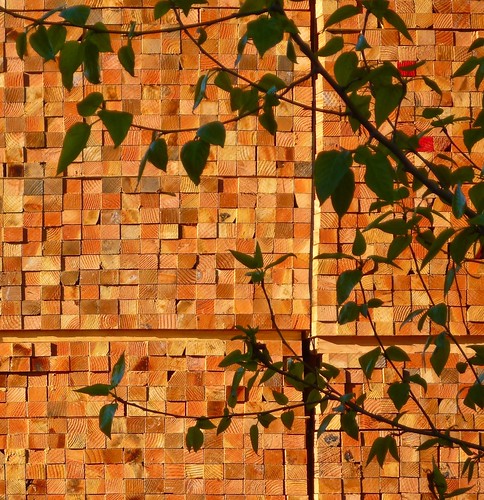
2nd Place - "Red Tulips" by fxgeek (22 votes):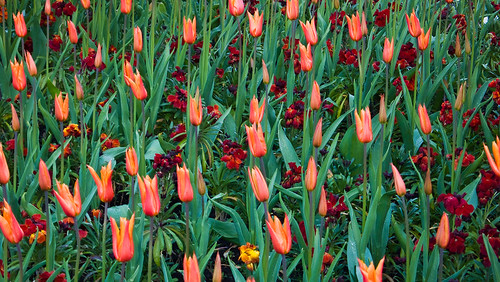
3rd Place - "Tree outside Central Library, Hull" by Hiding Pup (12 votes):
4th Place - "Prevailing Wind" by Wouter Brandsma (10 votes):
5th Place - "Crepe" by pbrouss84 (9 votes):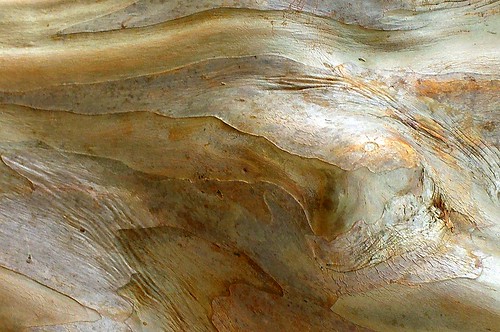
Thanks to all who submitted photos and/or voted, and congratulations to the contest winners!
Posted by Amin
![]() Labels:
photo contest
Labels:
photo contest
Canon Powershot G10 at Photokina? CMOS?
Wednesday, May 7, 2008
Mayank Bhatnagar started a thread in our discussion area regarding Canon's plans to use new CMOS sensors in compact cameras. As some may recall, this news was announced last summer. Rumors are circulating that we will see the first Canon compacts with larger sensors in time for Photokina in September of this year. While we've yet to see any good evidence for these rumors, Gordon Buck has posted evidence at Light Description that we will at least see a new G-series Powershot this year. Could the G10 feature a CMOS sensor, somewhat larger than the sensors found in the G-series to date? Or, as some rumors have suggested, could we see two advanced compacts from Canon at Photokina - one a G9 replacement, the other incorporating a larger (?CMOS) sensor?
It is likely that Panasonic, Canon, and Ricoh will introduce replacements for the LX2, G9, and GX100, respectively, in time for Photokina. We have reason to believe that both Canon and Panasonic are working to implement larger sensor designs in compacts, though we don't know when these compacts will be available, nor do we know whether they will supplement or replace existing lines. If anyone has more information, let us know!
Update: The Popular Photography briefly posted a G10 announcement containing some of the specifications (link).
Posted by Amin
![]() Labels:
Canon G10,
CMOS,
GX200,
Panasonic LX3,
Photokina,
Ricoh GX120
Labels:
Canon G10,
CMOS,
GX200,
Panasonic LX3,
Photokina,
Ricoh GX120
Petteri Sulonen's Sigma DP1 Impressions Now Online
Sunday, May 4, 2008
I always enjoy reading camera and lens evaluations by Petteri Sulonen and have been waiting for this one since he first mentioned an interest in the DP1. Petteri has now posted his impressions, "A Diamond In The Rough: Sigma DP1". Having read every piece I could find online about the DP1, in English or otherwise, I've come across none more worthwhile than his writeup. If you're interested in reading more about the Sigma DP1, my advice is to start here.
(Thanks to Yerg)
Posted by Amin
![]() Labels:
Petteri Sulonen,
Sigma DP1 review
Labels:
Petteri Sulonen,
Sigma DP1 review
Imaging Resource and Shutterbug Sigma DP1 Reviews
Friday, May 2, 2008
Shawn Barnett has posted his Sigma DP1 review over at the Imaging Resource. This is the first review from one of the major online review sites. Shutterbug has also published their review.
Read More......
Posted by Amin
![]() Labels:
Sigma DP1 review
Labels:
Sigma DP1 review
New Hall of Fame Inductee - Canon A610/620
Thursday, May 1, 2008
Serious Compacts Flickr group member eikona has added an entry to our reader generated Hall of Fame, the Canon A610/620. Check out his post here. Thanks MB!
Click here to learn how to add one of your own favorites to our Hall of Fame.
Posted by Amin
![]() Labels:
A610,
A620
Labels:
A610,
A620
'Natural Textures' Photo Contest Now Open for Voting
Our first photo contest is now closed to submissions and open for voting. Thanks to all who submitted an entry!
Please take a few minutes to review some of the wonderful submissions and cast your vote.
The photos are shown below the poll, and voting will end after 7 days.
Most of the images below have resized by Flickr and therefore may have more sharpening than intended by the photographer. Clicking on them will take you to the Flickr page, which in many cases will contain larger versions as well as commentary. Order of photos is as determined by Flickr.
"Ants Out for a Walk" by JD Hodges:
"Heil Banker" by slowbicycler:
Untitled photo by Photon-hunter: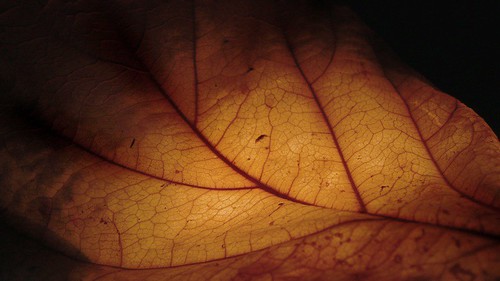
"Something is falling from the tree" by Damiel: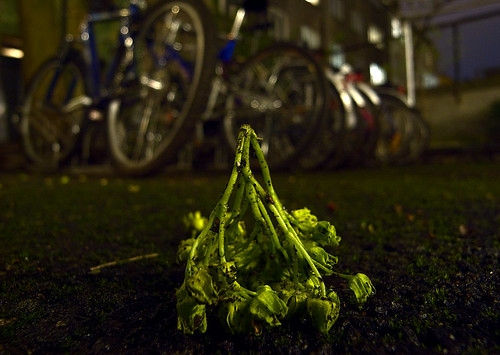
"Red Tulips" by fxgeek:
"waiting" by -fs-:
"Tree outside Central Library, Hull" by Hiding Pup:
"Cables" by cliffordsax:
"Blue Flowers" by Ulf Bodin:
"Deer track" by RJY:
"flavors..." by f lynx: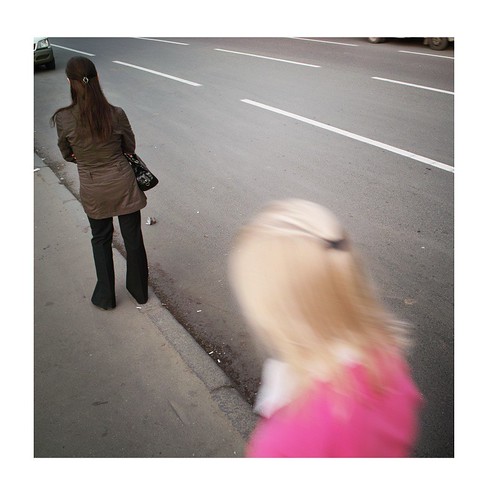
"Prevailing Wind" by wrtb28mm:
"Crepe" by pbrouss84:
"Sealilly" by Skippy1958: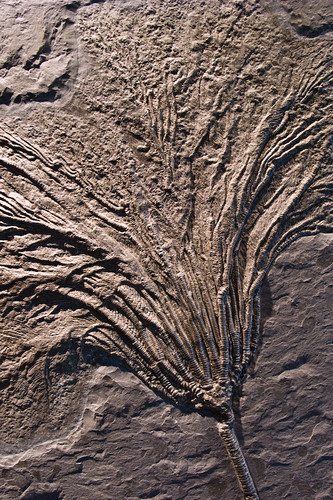
"Rock & Shells Weston Beach" by tom911r7: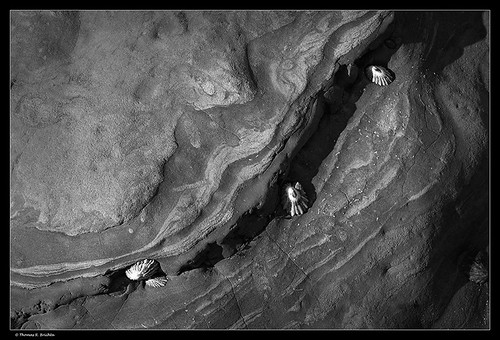
"Stacked Lumber" by ndalum78:
Untitled photo by Kamerat: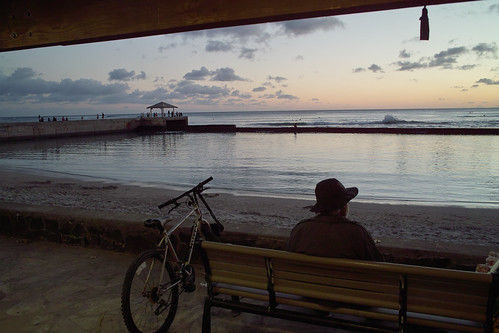
"Wood Ring" by britton42x:
"Sand Pile" by jjvornov: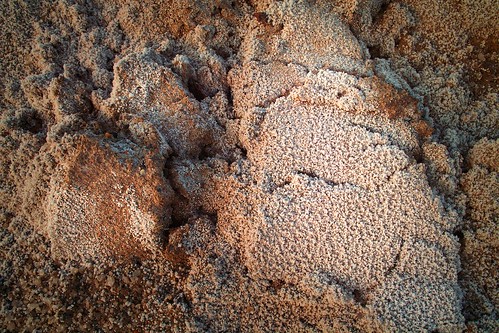
"lichen" by meaning of light:
Untitled photo by cristian.soreaga: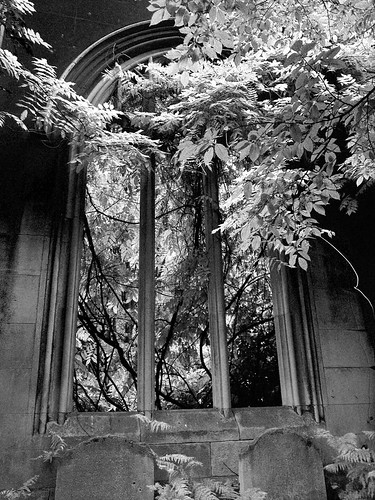
Posted by Amin
![]() Labels:
natural textures,
photo contest
Labels:
natural textures,
photo contest
Recent Posts
-
▼
2008
(254)
-
▼
May
(22)
- New Hall of Fame Inductee - Canon G2
- Gap in Sensor Sizes
- DP1 Shootout Pt. 7 - Detail Comparison with G9 and...
- A Pana LX2 impression by Photonhunter
- Fuji F100fd vs F31 High ISO Comparison by Prognathous
- DPReview Posts Sigma DP1 Review
- DP1 Shootout Pt. 6 - Dynamic Range Comparison with...
- DP1 Shootout Pt. 5 - Size and FOV Comparison with ...
- Panasonic LX2 Replacement Confirmed for the Fall
- Great Start for Serious Compacts Buy & Sell
- Featured S.C. Pool Photographer: Yerg*
- Would you like to see us test the Ricoh GR Digital...
- DP1 Shootout Update - More Compacts Coming...
- Looking for a Place to Buy or Sell Compacts?
- TWIP Photo Contest - 'Doors'
- An iCamera?
- 'Natural Textures' Photo Contest Winners
- Canon Powershot G10 at Photokina? CMOS?
- Petteri Sulonen's Sigma DP1 Impressions Now Online
- Imaging Resource and Shutterbug Sigma DP1 Reviews
- New Hall of Fame Inductee - Canon A610/620
- 'Natural Textures' Photo Contest Now Open for Voting
-
▼
May
(22)

